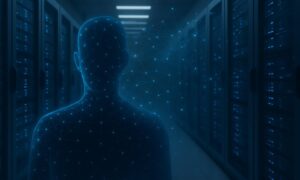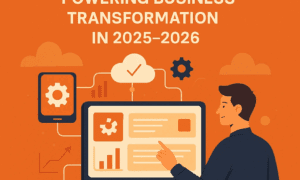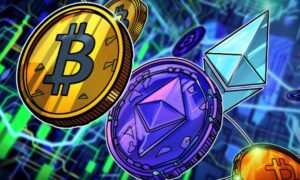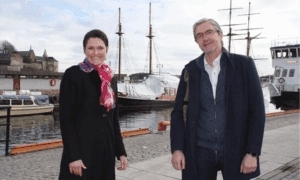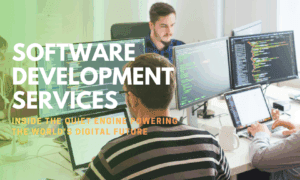The role of cybersecurity leadership has evolved far beyond traditional network defense as cyber threats grow increasingly sophisticated. In this in-depth interview, cybersecurity expert Gourav Nagar shares insights from his decade-plus journey at the forefront of digital security. Gourav brings a unique perspective on the challenges of protecting modern enterprises, from emerging AI-powered threats to the complexities of building resilient security teams.
Drawing from his extensive background in security operations and engineering, he explores how organizations can adapt to an ever-changing threat landscape while fostering the next generation of cybersecurity talent. His practical insights on incident response, threat detection, and strategic leadership offer valuable lessons for anyone involved in protecting digital assets. As businesses navigate the complexities of remote work, cloud transformation, and sophisticated cyber attacks, Nagar’s approach to balancing technical excellence with strategic vision becomes increasingly relevant.
Through this wide-ranging conversation, Nagar addresses some of the most important questions facing today’s security leaders and offers a forward-looking perspective on the future of cybersecurity defense.

Gourav Nagar
With over a decade of experience in cybersecurity, how have you seen the threat landscape evolve, and how have your security strategies adapted to these changes?
The threat landscape has changed significantly over the past decade; we have seen an increased sophistication of attacks. Attackers have also adapted advanced technologies like AI and machine learning to create more complex and hard-to-detect threats. With the increased usage of IOT devices, remote work, and cloud services, the entry points for threat actors have been multiplied. Business email compromise & ransomware threats are still a real concern and have significantly increased over the past few years. We have seen the rise of supply chain attacks and attacks on cybersecurity companies.
Organizations have realized that the traditional perimeter-based approach is no longer sufficient, leading to a significant shift towards the zero-trust framework. With the increasing reliance on cloud-based services and remote work, security teams have placed a heightened focus on identity and access management solutions. Security is now being integrated into the development process from the outset rather than being an afterthought. Regulatory compliance, such as CCPA and GDPR, has become a key driver of security strategies.
You’ve specialized in security operations and engineering. What are some of the key elements of a successful security operations framework in today’s complex tech environment?
A successful security operations framework requires continuous 24/7 endpoints, networks, and cloud infrastructure monitoring for early threat detection and rapid incident response. Getting a 360-degree view is critical, and it is possible only by ensuring that all the necessary log sources are identified and ingested into a SIEM or data lake. A Red Team program would be a great addition as the best detections come from Red Team exercises, which provide useful information through simulated attacks, thus significantly improving overall detection and response capabilities.
Cybersecurity teams should create a management-approved Cybersecurity Incident Response Plan (CSIRP) and playbooks for various threat scenarios. TableTops exercises are a great way to practice and improve current processes. This demonstrates the team’s ability to react to incidents efficiently and consistently. As the number of alert sources grows exponentially, the security operations team should find ways to automate the manual investigation process and focus on the quality of the investigations. A feedback loop should be established between threat detection, threat intelligence, incident response, and offensive security teams. The input from stakeholders is vital to the continuous improvement of the security operations program.
A process for responding to critical incidents should be established. Management should focus on tracking key metrics like mean time to detect (MTTD) and mean time to respond. No repeat incidents should be treated as an Indicator of the program’s success.
Continuous training on new technologies and adversary tactics is also critical, as the attack surface & attackers are constantly changing their Tactics, techniques and procedures. Lastly, nothing beats an engaged and positive work environment.
Having built high-performing cybersecurity teams, what qualities do you prioritize when recruiting and developing talent in this highly specialized field?
I prefer certain key traits when setting up high-performing cybersecurity teams for recruiting and training staff. I generally check curiosity and a passion for cybersecurity when people do not submit their CVs for job openings as the field is changing and it needs people interested in experimenting with new technologies and challenges technically already staffed.
Critical and out-of-the-box thinking are similarly crucial for professionals who can anticipate and address unconventional threats. Owing to the rapid changes, a constant learning approach is fundamental. The attention to detail is paramount, without which the data analysis and potential vulnerability finding will be imprecise. Strong moral principles do not allow for compromises, as honesty and trust are the cornerstones of cybersecurity when one is dishonest or cannot be trusted. Last but not least, the ability to work with others effectively, a piece of the whole puzzle, is a must. Cybersecurity measures are often implemented through the collaboration and coordination of all the relevant departments and interested stakeholders.
I place a strong emphasis on the adaptability and resilience of responsible cybersecurity teams. The nature of cyber threats is such that the workforce is required to pivot to the new challenges and not only remain calm under pressure but also be able to find quick solutions. Nevertheless, software expertise must not be the only requirement, as I am also seeking the kind of people who can solve different problems by using their creativity and by relating the information with the real situations to which they have applied their knowledge. There are also communication skills that are equally important in the tech field because these professionals should band together and express the tech issues to the non-tech side of the company. Apart from that, they are supposed to form functional interdepartmental teams. Being incapable of grasping the complexity of the issue, cooperation becomes difficult. In the end, I hope to establish the merit of growth as I want to build the team so that every member of it will mentor others, encourage sharing of knowledge, and be updated on dynamic trends and technologies.
How do you balance the technical demands of cybersecurity with the need for strong leadership and strategic vision within your teams?
Balancing the technical demands of cybersecurity with the need for strong leadership and strategic vision requires a multifaceted strategy. The key is to hire the right team and empower them to innovate and make decisions. Trusting their expertise enables innovation, and mentoring them helps create future leaders who understand technical and strategic aspects. Stay updated about adversaries’ tactics, techniques, and procedures (TTPs) by continuously learning and replicating them in your environment. Continuous risk management & assessment services as a basis for decision-making, strategic planning, and resource allocation.
Developing a security-first culture across the organization is critical for the success of the cybersecurity program. It starts with cybersecurity leadership along with business leadership, encouraging a shared sense of responsibility among the employees. A cybersecurity leader must translate technical concepts into business terms and align cybersecurity goals with the organization’s goals. Building healthy cross-functional relationships also helps in embedding cybersecurity across different business units. This balanced approach amplifies both day-to-day operations and the strategic maturity of the cybersecurity program.
Given your experience across multiple certifications like CISSP, CISM, and GCFA, how do you ensure that your knowledge and skills remain relevant in an ever-changing industry?
I like to read, and the beauty of cybersecurity is that there is always something new and exciting in the market. Certifications like CISSP, CISM, GIAC, and GCFA provide a strong baseline of cyber security knowledge, and as information security professionals it’s our responsibility to advance the field. Most certifications also require earning continuing professional education (CPE) credits through webinars, industry conferences, and specialized training to maintain the accreditation – this is a brilliant way to stay updated with cybersecurity knowledge. I also like to do hands-on practice through cyber ranges, Capture the Flag (CTF) events, and interactive labs on platforms. This combination of continuous education, hands-on practice, and reviewing industry trends allows me to maintain relevance, ensuring that my knowledge and skills align with the demands of today’s cybersecurity landscape.
Can you share an example of a particularly challenging security incident you’ve faced, and how your approach helped mitigate the impact or prevent further damage?
I cannot discuss the specifics of the incidents, but we usually apply a framework like cyber kill chain or MITRE ATT&CK during an incident investigation. The key is knowing your infrastructure, product, and security tools well. Also, knowing the adversary’s mindset and motive is very helpful in the investigation. One essential tip is always to verify your evidence from multiple log sources. In any organization, changes in systems, infrastructure, tools, people, and processes always create gaps that an adversary can leverage to get into your environment. The key metrics to track are “no repeat incidents” and having a robust post-incident review process. The gaps identified during the incidents should be tracked to their completion and documented appropriately.
Looking ahead, what emerging trends or technologies do you believe will have the greatest impact on cybersecurity, and how should organizations prepare for them?
Several emerging trends and technologies will significantly impact cybersecurity as we live in a far more digitally connected world. AI and Machine Learning will play increasingly important roles in cyber attacks and defense and require significant investment in AI-powered security tools and expertise. The IoT devices are expanding attack surfaces, demanding robust security policies and network segmentation. Adapting 5G and edge computing will create new vulnerabilities that organizations must address through adapted security strategies and zero-trust models. Although quantum computing is in the early stages, the advancements may threaten current encryption methods, requiring a transition to quantum-resistant algorithms. Leveraging automation and AI to handle the increasing complexity and speed of cyber threats will be essential to respond adequately.
Cybersecurity leaders need to stress the importance of staying up to date with emerging technologies and their potential impact. By doing so, they empower their teams and organizations to invest in the right skills, ensuring they can understand and respond effectively to new and evolving threats.
It’s also essential for cybersecurity leaders and organizations to take a proactive stance by conducting regular risk assessments. This approach helps them stay ahead of potential risks and ensures their security systems remain resilient and adaptable in the face of new challenges.



